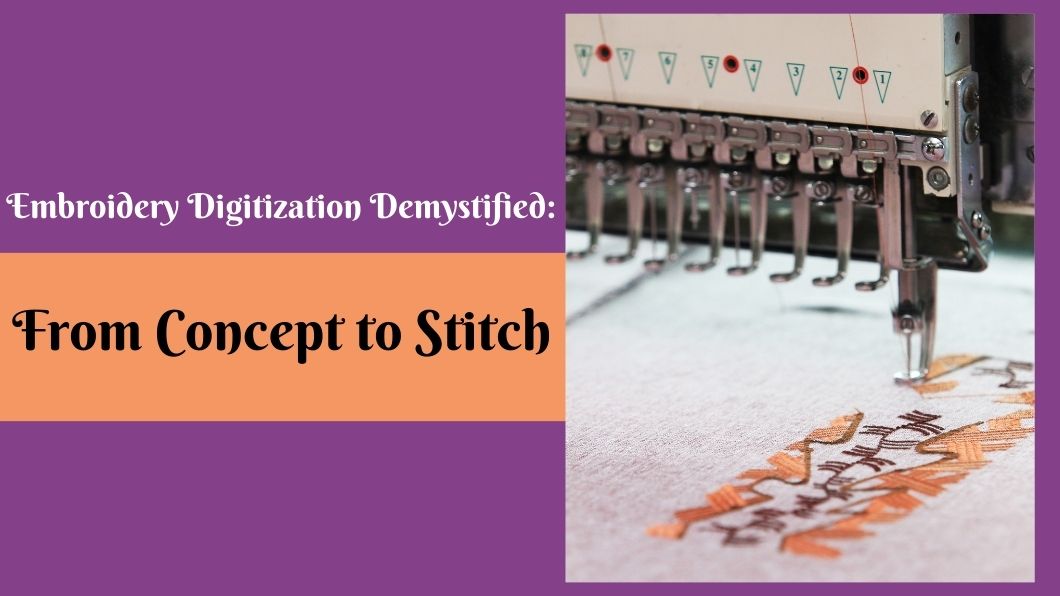
Embroidery has come a long way from its traditional roots, evolving into a sophisticated art form that seamlessly blends creativity and technology. At the heart of this transformation lies the intricate process of embroidery digitization, a journey that transforms design concepts into meticulously stitched patterns. In this article, we'll take you through the fascinating world of embroidery digitization, uncovering the steps involved and the artistry required to create stunning machine embroidery designs.
Understanding Embroidery Digitization: The Bridge Between Art and Machine
Embroidery digitization is the pivotal process that converts a design into a language that embroidery machines understand. It's the intricate code that guides the machine's needle, instructing it to create each stitch with precision. This process is essential to bring intricate designs to life on fabrics, from delicate blouses to statement jackets.
The Steps of Digitization: From Concept to Stitch
- Design Selection and Conceptualization: The journey begins with selecting or creating a design. Whether it's a custom motif, logo, or intricate pattern, the digitization process begins by conceptualizing how the design will translate into stitches.
- Artwork Conversion: The chosen design is then scanned or converted into a digital format using specialized software. This digital image serves as the canvas on which the digitizer works their magic.
- Digitizing Software Mastery: The digitizer uses advanced embroidery digitizing software to meticulously plot each stitch, determining factors like stitch type, direction, density, and underlay. This step requires a deep understanding of the fabric's texture, the intended garment, and the desired visual effect.
- Stitch Path Creation: The digitizer defines the path the machine's needle will follow to create the design. This involves creating outlines, fills, and complex patterns. Each element is carefully considered to ensure the final result is both visually appealing and structurally sound.
- Thread Color Selection: The digitizer selects thread colors that match the design's requirements and desired aesthetic. This step contributes to the design's visual impact and helps create a harmonious composition.
- Fine-Tuning and Testing: Before the design is stitched onto fabric, the digitizer meticulously fine-tunes the digitized file. This involves adjusting stitch lengths, densities, and other parameters to achieve the desired outcome. Test runs on similar fabrics ensure that the design will translate well in reality.
- Machine Compatibility: Different embroidery machines have varying technical specifications. The digitizer must ensure that the digitized design is compatible with the specific machine's capabilities, optimizing the design's stitch quality and overall performance.
- Stitching and Quality Assurance: With the digitized file perfected, it's time for the machine to work its magic. The design is stitched onto the chosen fabric, and the digitizer carefully inspects the finished piece for any inconsistencies or issues that might have arisen during the stitching process.
The Art and Skill Behind Digitization
Embroidery digitization is not just a technical process; it's an art that demands creativity, precision, and an in-depth understanding of textiles and design. A skilled digitizer doesn't just translate images into stitches; it breathes life into the design, ensuring that every thread contributes to the intended visual impact.
Conclusion: Where Artistry Meets Technology
Embroidery digitization is the bridge that connects artistry and technology in the world of fashion and design. It's a process that requires the expert touch of professionals who understand the nuances of fabrics, stitches, and creative vision. From the initial concept to the final stitch, embroidery digitization is a testament to human ingenuity and craftsmanship, transforming threads into wearable works of art that adorn wardrobes around the world.
